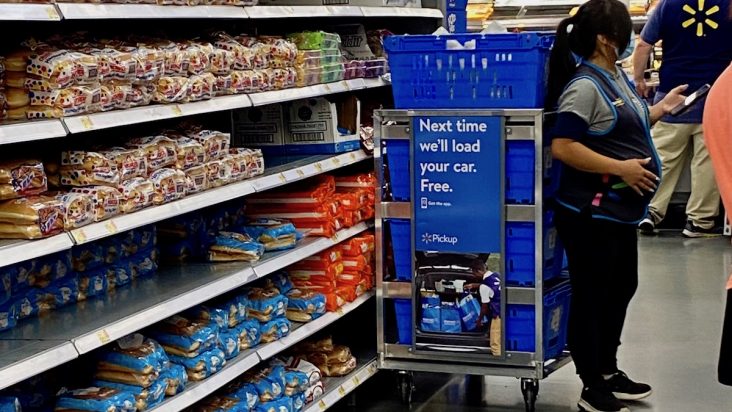InMarket Report: Walmart leads retailers for customer loyalty
by September 13, 2021 4:33 pm 2,571 views

A new report from InMarket tagged the Top 10 retailers in the second quarter based on loyalty – average return visits per customer. Walmart received the top score for customer loyalty, in part because of its massive footprint within 10 miles of 90% of the U.S. population.
Walmart garnered a loyalty score of 3.22, much better than the average 1.33 for the retail sector.
While the U.S. economy has fully reopened, a rise in the concerns over COVID-19 Delta variant cases took a toll on loyalty readings which were down sharply from the first quarter of the year. Walmart held on to its top spot in the second quarter and InMarket researchers said the retail giant’s omnichannel strategy has served it well during the pandemic and the recent upticks in cases.
Analysts said Walmart also established price gaps against some of its major competitors and because of its large scale has done a better job than most getting inventory on fast-moving consumables which are in shorter supply overall. The report said retailer Fred Meyer also showed resilience in the second quarter, leaping ahead of other other retailers to take second place. Fred Meyer, owned by Kroger, is also credited for efforts to incentivize consumers to get vaccinated at its locations with a top prize of $1 million for five winners and free groceries for a year. Fred Meyer scored 2.62 on the loyalty chart for the quarter ending June 30.
Midwestern grocery giant Meijer was third on the loyalty chart at 2.58 and Target wasfourth with a score of 2.14. InMarket said there were no surprises in the top 4 retailers, except that Fred Meyer raised its game from fifth to second place from the first quarter to the second quarter reports. Nordstom was the only department store to crack the top 10 with a loyalty rating of 1.73 for the quarter ending June 30.
Lowe’s and The Home Depot also saw higher than average repeat visits as the home improvement chains each spent more than $1 billion to upgrade technology, expand fulfillment networks and further develop omnichannel offerings like curbside pickup and delivery to attract more repeat consumers. Lowe’s saw a 25.9% increase in consolidated comparable sales, and The Home Depot reported a 31% increase in comparable sales from the same quarter the prior year. Lowe’s had a loyalty rating of 2.04 and The Home Depot was sixth with a rating at 2.03.
Wholesale clubs Costco and Sam’s Club also have loyal customer bases because of their membership models. Costco had a loyalty rating of 1.93 in the second quarter and the Sam’s Club rating was 1.88. InMarket said value appeared to be top of mind for consumers as warehouse clubs increased memberships. Costco’s membership fee income rose 10.6% to $901 million, total sales grew 21.7% and same-store sales increased 13.8%.
Sam’s Club saw triple digit growth in curbside orders, an 8.7% increase in comparable sales, and a 12.9% gain in membership income – the strongest growth in 6 months. Sam’s also added 200 national brands like Beyond Meat, Casper, and Kola, improved its contactless tech advancements like Scan & Go, and remodeled 56 stores. Despite all that effort, Dollar General edged out Sam’s Club at No. 8 on the list with a loyalty rating of 1.92.
Outlet-centric retailers like Jockey, OshKosh and Saks Off 5th, each saw lower loyalty scores in the period. Bass Pro Shops also saw lower loyalty scores which InMarket said could be related to a change in how returns are processed directly through shipping centers rather than in stores. The specialty retailer reported returns were up 20% and that was less traffic in stores and missed opportunities to capture impulse buys.
